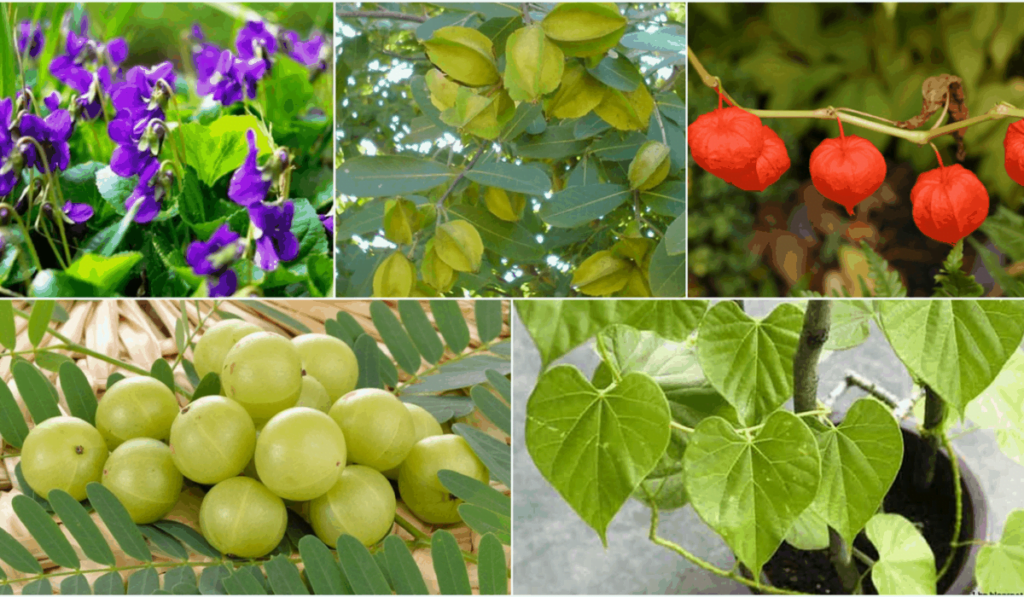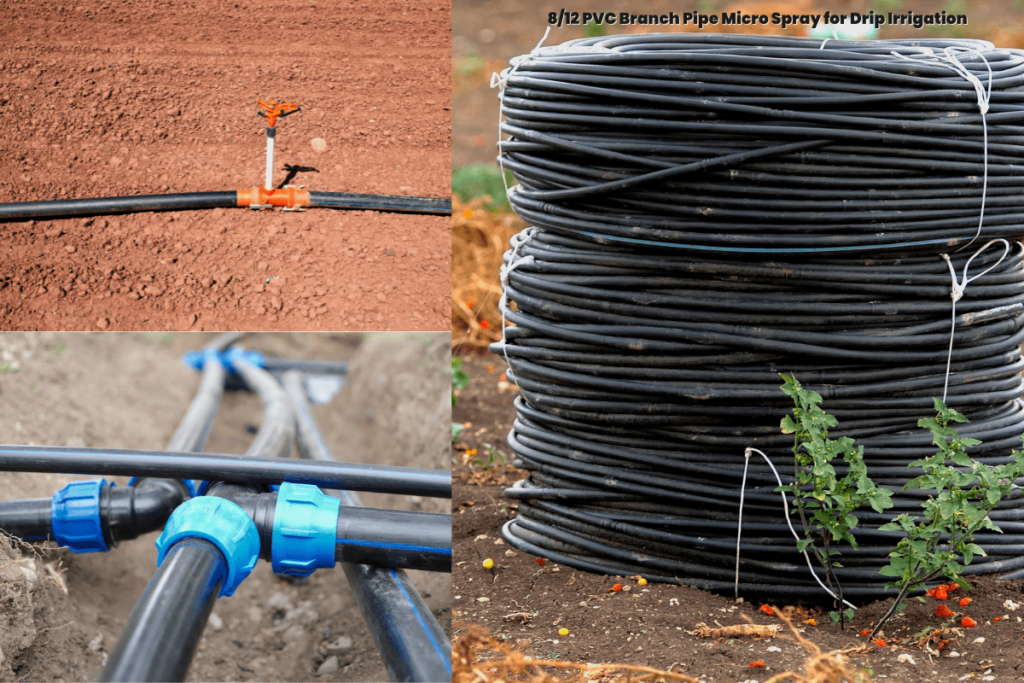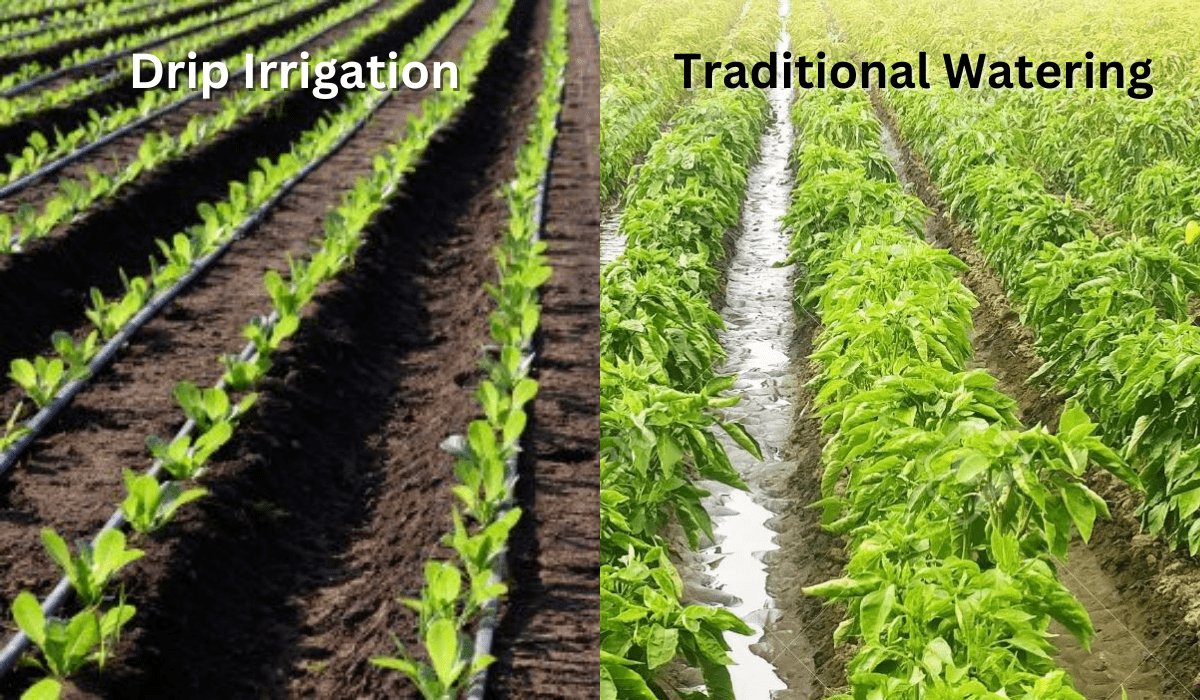Drip Irrigation for Aromatic Plants: Delightful Scents
Aromatic plants have beautiful smells and colorful flowers that make a garden happy and calm. To help these plants grow well and release their delightful scents, it’s important to give them enough water without wasting it. That’s where drip irrigation comes in. In this article, we will learn about the amazing benefits of drop irrigation for fragrant plants, how to set it up, and how to take care of it.
Table of Contents
Introduction to drip irrigation for aromatic plants
Aromatic plants, such as lavender, rosemary, and jasmine, require consistent moisture to flourish. Drip irrigation, a method that delivers water directly to the plant’s root zone, proves to be highly effective in meeting these plants’ watering needs.
Unlike traditional overhead sprinklers, drop irrigation minimizes water loss through evaporation and ensures targeted watering, promoting healthy growth and delightful scents.
Understanding the needs of aromatic plants
Before delving into the specifics of drip irrigation, it’s important to understand the special requirements of aromatic plants. These plants generally succeed in well-draining soil and prefer regular, deep watering. However, overwatering can be harmful to their health, directing to root rot and decreased fragrance. Therefore, it’s important to strike the right balance and provide good moisture without saturating the soil.
Benefits of drip irrigation
Drip irrigation offers several advantages when it comes to nurturing aromatic plants. Firstly, it conserves water by delivering it directly to the plant’s roots, reducing evaporation and runoff. This water-saving characteristic makes drop irrigation an environmentally friendly choice, especially in regions prone to drought or water scarcity.
Furthermore, drip irrigation helps prevent leaf diseases and fungal growth by keeping the foliage dry. By avoiding the use of overhead sprinklers, which often wet the leaves, dripple irrigation minimizes the risk of diseases caused by prolonged moisture on the plant’s surface.
Choosing the right drip irrigation system
Selecting the appropriate drip irrigation system for aromatic plants is required to ensure optimal performance. Consider the following factors when making your choice:
- Components contained in a system include a main water source, tubing, emitters, and optional accessories like filters and pressure regulators.
- Emitters play a crucial role in regulating water flow and distributing it evenly to the plants.
- The choice of emitters depends on factors such as plant water requirements, soil type, and local climate conditions.
- Different types of emitters include drip emitters, micro-sprinklers, and soaker hoses.
- Determining the watering schedule involves understanding the specific watering needs of fragrant plants.
- Factors such as plant species, growth stage, and environmental conditions influence the frequency and duration of irrigation sessions.
Types of Aromatic Plants
Here are some of the best aromatic plants for drip irrigation:
- Lavender: Known for its soothing scent, lavender prefers moderate watering and well-drained soil.
- Rosemary: This highly aromatic herb thrives in dry conditions, making it ideal for drop irrigation.
- Thyme: With varieties like lemon thyme and creeping thyme, this herb enjoys moderate watering and well-drained soil.
- Sage: Drought-tolerant sage has gray-green leaves and can withstand dry conditions, making it suitable for trickle irrigation.
- Oregano: This flavorful herb requires moderate watering and well-drained soil.
- Lemon Balm: Known for its calming properties, it prefers moist soil, which drop-by-drop irrigation can provide.
- Mint: Refreshing and available in various flavours, mint needs consistently moist soil, achievable with micro irrigation.
- Lemon Verbena: This shrub emits a strong lemon scent and prefers well-drained soil and regular watering.
- Geranium: Geraniums come in different scents, like rose and lemon, requiring well-drained soil and moderate watering.
- Eucalyptus: With its distinctive aroma, eucalyptus plants need regular watering, making drop irrigation suitable.


Consider the specific needs of each plant and adjust your drip irrigation system accordingly. These fragrant plants will enhance your garden with delightful scents throughout the year.
Installing a drip irrigation system for aromatic plants
Now that you’ve chosen the suitable drip irrigation system for your aromatic plants, it’s time to install it. Follow these steps for a successful installation:
Preparing the soil: Before installing the drop irrigation system, ensure that the soil is ready. Loosen the soil and remove any weeds or waste that could block the water flow.
Setting up the main water source: Ensure that the connection is stable and doesn’t leak. You can use a backflow prevention device to prevent the water supply from getting contaminated.
Installing the drip lines and emitters: Place the drip lines along the area where you’re planting, keeping them near the roots of the plants. Attach the emitters to the drip lines and adjust their spacing based on the water requirements of the plants.
Maintaining a drip irrigation system
To ensure the proper functioning and longevity of your drop irrigation system, regular maintenance is necessary. Here are some important tasks you should perform:
Monitoring water usage
Regularly monitor the water usage of your micro irrigation for aromatic plants to ensure that your plants receive sufficient moisture without being overwatered. Keep an eye on the soil moisture levels and adjust the watering schedule as needed.
Adjusting the watering schedule
Weather conditions and the time of year can influence the water requirements of your plants. Therefore, you may need to adjust the watering schedule accordingly. Consider factors such as temperature, rainfall, and the size of your plants when making these adjustments.
Cleaning and maintaining the system
Periodically inspect the drip lines and emitters for clogs or damage. If you notice any blockages, clean them out or replace the affected parts. It is also advisable to flush the system occasionally to remove any dirt or debris that could obstruct the water flow.
Maximizing the effectiveness of drip irrigation for aromatic plants
| Technique | Description |
|---|---|
| Mulching for moisture retention | Apply organic mulch around the plant’s base to retain soil moisture, control weed growth, and protect the roots. |
| Fertilizing techniques | Regularly fertilize fragrant plants with slow-release organic fertilizers or liquid fertilizers formulated for them |
| Pruning and training aromatic plants | Trim and shape the plants regularly to improve air circulation, sunlight penetration, and enhance scent production. |


Troubleshooting common issues with drip irrigation
Here are some common problems that can happen with drip irrigation systems and how to fix them:
Clogged emitters:
- If the water flow is reduced or uneven, check if the emitters are clogged.
- Clean the clogged emitters or replace them to make sure water flows properly.
Uneven water distribution:
- Sometimes, the water might be distributed unevenly.
- Check if the emitters are spaced correctly or if there are variations in water pressure.
- Adjust the spacing of the emitters or install pressure regulators to make sure water is distributed evenly.
System leaks:
- Inspect the drip lines and fittings for any leaks.
- If you find any loose connections, tighten them.
- If you see any damaged components, replace them to prevent water from being wasted and to keep the system working well.
Conclusion
In conclusion, drip irrigation is a highly effective method for nurturing aromatic plants. It provides targeted watering, conserves water, and reduces the risk of leaf diseases. By choosing the right components and maintaining the system, gardeners can create a thriving garden filled with delightful scents.
Get your 8/12 PVC Branch Pipe Micro Spray for Drip Irrigation, Garden Irrigation, and more at Agricomplex. Don’t wait, shop now!

Frequently Asked Questions (FAQs)
How often should I water aromatic plants using drip irrigation?
Watering frequency depends on various factors, including plant species, climate, and soil conditions. Monitor the soil moisture and adjust the watering schedule accordingly, aiming for consistent but not excessive moisture.
Can I use a micro irrigation system for other types of plants in my garden?
Absolutely! Drip irrigation is a versatile watering method suitable for a wide range of plants, including vegetables, flowers, and shrubs. Adjust the system parameters to meet the specific needs of each plant.
Are there any maintenance tasks I should perform during the winter months?
During the winter, it’s essential to winterize your drop irrigation system to prevent freezing and damage. Drain the system, remove emitters, and store them in a frost-free location until the next growing season.
Can I install a drop-by-drop irrigation system myself, or should I hire a professional?
Installing a drop irrigation system can be a DIY project, especially for small gardens. However, if you have a large or complex landscape, it may be beneficial to seek professional assistance for proper design and installation.
How long should I run my drop irrigation system during each watering session?
The duration of watering sessions depends on factors like soil type, plant water requirements, and system flow rate. Experiment with different durations and monitor soil moisture to determine the ideal watering time for your specific setup.
Related Articles on Drip Irrigation
People Also Asked
What are the benefits of drop irrigation for aromatic plants?
Drip irrigation conserves water, promotes healthy plant growth, and reduces weed growth and disease risks.
Can I use drip irrigation for other types of plants?
Yes, soaker irrigation can be used for various plants, including vegetables, fruits, flowers, shrubs, and trees.
How do I set up a drip irrigation system for aromatic plants?
Determine plant water requirements, select appropriate components, layout tubing, install emitters, connect to water source, test and adjust.
Are there any disadvantages to using micro irrigation for aromatic plants?
Potential for clogging if not properly maintained, the initial cost may be higher, risk of overwatering or underwatering if not monitored closely. Regular maintenance is necessary.
Can I automate drop irrigation for aromatic plants?
Yes, use timers or smart controllers to schedule and regulate watering for convenience.




